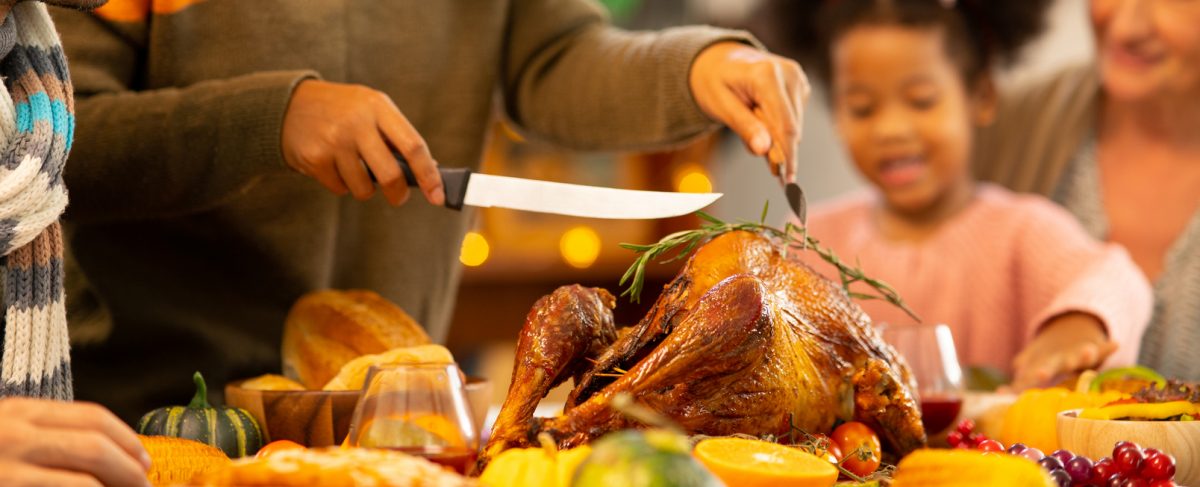If you are getting ready to host a big holiday meal, your freezer can make the job a lot easier. Beyond their obvious advantage for food storage, freezers can help you stay ahead of the clock as you prepare for the big feast. Preparing certain dishes and freezing them in advance can be great for keeping your kitchen less busy and your stress level low as Thanksgiving and other major holidays draw closer. And your guests will never know the difference.
What to freeze is up to you, but you can freeze just about any foods you tend to find at a traditional holiday meal. We spoke with an expert, Lan Lam, senior editor of Cook’s Illustrated and a regular on America’s Test Kitchen to get her advice on what holiday favorites are best to freeze, and which are better to prepare fresh.

Turkey: We’ll start with the main course. Most people won’t be reheating frozen cooked turkey, but thawing a turkey is practically a holiday tradition in itself. Defrost it in the refrigerator, especially for larger roasts, Lam says. Give it enough time to thaw. “If they’re partially frozen, you’re going to run into food safety issues,” she says.
Mashed potatoes: Save time by preparing this beloved comfort food in advance. “Mashed potatoes are great for freezing,” Lam says. They might look a bit soupy during the reheating process, but don’t worry. “When you first defrost them, they’ll look like a soupy mess,” Lam says. Frequent stirring as you warm them up should take care of the problem.
If you opt for scalloped potatoes, consider making them the day of instead of freezing, as freezing can dry out the dish.
Sweet potatoes: The same rules apply. “If they are mashed or pureed, go for it,” Lam says. “If you’re scalloping them or putting them in a casserole, it’s not a great candidate for freezing.”
Stuffing: Whether stuffing should be frozen depends on the recipe and consistency. “If you have a stuffing that doesn’t contain a ton of cubed vegetables, you could fix that in advance” and freeze it,” Lam says. “If there are huge chunks of vegetables, you might end up with something that’s a little soggy.”
Dinner rolls: These comforting carbs store well in the freezer. Lam recommends warming them in a 300-degree oven and wrapping them in foil to maintain moisture and avoid charring. (Accept right now that you probably are going to eat one too many.)
Gravy: This one gets an enthusiastic “yes” on freezing. “Make it two or three weeks in advance if you can. It holds really well and saves you so much time,” Lam says. Need a recipe? Try Lam’s “Game-Changing Gravy.”
Fruit pies: “If you are going to make pies, you can prepare the dough, even up to six weeks in advance,” Lam says. “Make sure it is tightly wrapped so it doesn’t dry out in the freezer. Pull it out two days before you make your pie and put it at fridge temp.” Fruit pies also freeze well. “You can make your entire pie, start to finish, and pop it into the freezer raw,” Lam says, though she advises against egg washing a pie that will be frozen. “You can bake them frozen. Just follow the recipe.” Lam suggests adding 10-15 minutes cooking time and keeping a close eye on the pie as it bakes. “Cover the rim or entire crust with aluminum foil if it happens to be browning quickly.”
Pumpkin pie: Keep these out of the freezer. “I wouldn’t try to make that frozen,” Lam says. “When you freeze a custard pie, pureed in that way, the ice crystals kind of pull water out. When you defrost, the water isn’t perfectly incorporated. You end up with a curdled pie instead of something creamy and luscious.”
Lam stresses that there are recipes for these favorites that are designed to make the food easy to freeze. So, there are ways to freeze pumpkin pie and other dishes that she might choose not to freeze.
Ready for leftovers? They should be refrigerated or frozen within two hours, and generally, eaten or discarded within four days – about the amount of time it will take for many of us to eat what’s left over and swear off eating for the next few weeks.
Keep Your Freezer Organize
Preparing a holiday meal can be hectic, especially if you are serving a large crowd. Staying as organized as possible, so you can find what you need at the right time, will make your life easier. Label the dishes as you freeze them, and create “zones” in your freezer for certain kinds of foods (vegetables, desserts, etc.) Maximize space by freezing foods as flat as possible.
Freeze and Refrigerate the Thanksgiving Leftovers Safely
Leftovers are a treasured holiday tradition in many households. Whether you will be freezing or refrigerating leftovers, allow them to cool first. Freezers should be kept at 0 degrees Fahrenheit, and refrigerators at or below 40 degrees Fahrenheit, according to the U.S. Food and Drug Administration.


